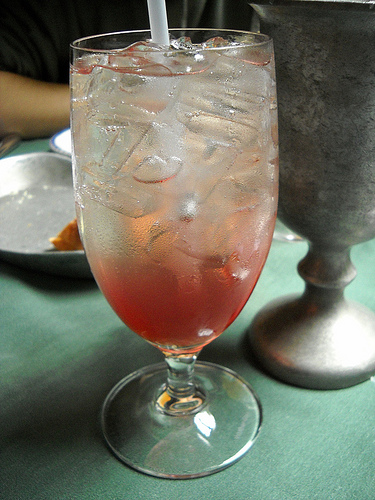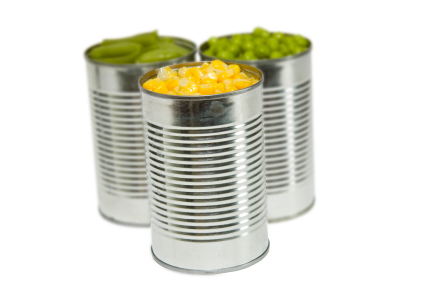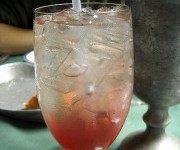 Photo: holytoastr“Drinking vinegar” does not, at its core, sound like the most tempting libation. But that’s what a shrub is: a series of ingredients cooked down and preserved in vinegar, then strained into a syrup, and used for a multitude of purposes.
Photo: holytoastr“Drinking vinegar” does not, at its core, sound like the most tempting libation. But that’s what a shrub is: a series of ingredients cooked down and preserved in vinegar, then strained into a syrup, and used for a multitude of purposes.
Conceived in several parts of the world (derived from the same notion as Japanese black vinegars and aged Italian balsamico), shrubs have existed as a means of preserving additional (and sometimes slightly overripe) fruit left over from harvest, and as a non-alcoholic drink known to reinvigorate the salivary glands in hot weather.
As seasonal eating — and the old-fashioned food preservation practices that go along with it — has made a come back among eco-conscious eaters, shrubs have also reappeared. And, as unlikely as it may sound to some, shrubs are now a hot item in many urban bars and restaurants (see this New York Times article as evidence).
A basic shrub is made of fruit used as a flavor base, vinegar or preserving solution, and a sweetening agent (something that cuts or rounds out the acid in the vinegar). The base fruit (you can use more than one type of fruit, or add herbs if you want to get fancy) macerates in vinegar for about a week (preferably in a non-reactive container with a lid — Cambros or kitchen-grade bulk containers are good for this). After a week or so, the contents go into a pan with the sweetening agent, to get boiled down. The fruit is then strained out, and the liquid poured into a container (preferably a screwtop bottle or jar). The contents are shelf-stable, and can last near-indefinitely (vinegar acts as a preservative).
Shrubs are a great way to preserve fruit that is not either fit for canning/jamming or might be too ugly or overripe to dry. (Note: This does not mean fruit that has gone bad. Like all preserving techniques, shrubs require the ingredients be healthy enough to consume.)
Shrubs are multifaceted. They can be added to sparkling water for non-alcoholic drinks, or added to cocktails as a brighter, higher-acid alternative to gomme syrup or juice. They can also be used for dressings, sauces (such as the Italian agrodolce), and as a limited but delicious addition to baking that involves syrups or glazes.
The flavor combinations are endless, and can be modified for any number of uses. Cherries, pineapples, or cucumbers (especially Persian) make delicious shrubs, and experimenting with them can be highly rewarding.
Basic Shrub Recipe (adopted from Evan Kleiman’s blog, Good Food)
Makes about 1 1/2 to 2 quarts, depending on the fruit used.
Note: These measurements can be played with quite liberally, as some fruits contain more natural sugars.
Ingredients
2 quarts fruit (this time of year pears, apples, and figs work well)
1 liter apple-cider vinegar, preferably Bragg brand. Rice or champagne vinegars work well as alternatives.
1/2 to 1 cup raw sugar (this can be modified based upon the desired level of sweetness and the amount of sugar in the fruit)
Preparation
1. Rinse the fruit and discard any rot. Place it in a large non-reactive or ceramic pot and mash for several minutes with your hands or a wooden spoon to break up. Pour in enough vinegar to cover and top with a lid. Let it macerate at room temperature for a week, stirring once a day. (Do not be alarmed by the smell or the sludge on top.)
2. After one week, stir in 1/2 cup of the sugar and gently boil mixture for 1 hour (the odor created from boiling is strong, so you may want to open the doors and windows), stirring occasionally. Cool slightly, then strain.
3. Test your shrub: cool 3 to 4 tablespoons of the fruit mixture. Fill a 20-ounce glass with ice. Add water or soda water, then add the chilled fruit mixture. Taste to determine sweetness. If it is too tart, add sugar little by little, while still hot. Then cool fully and funnel into bottles.




